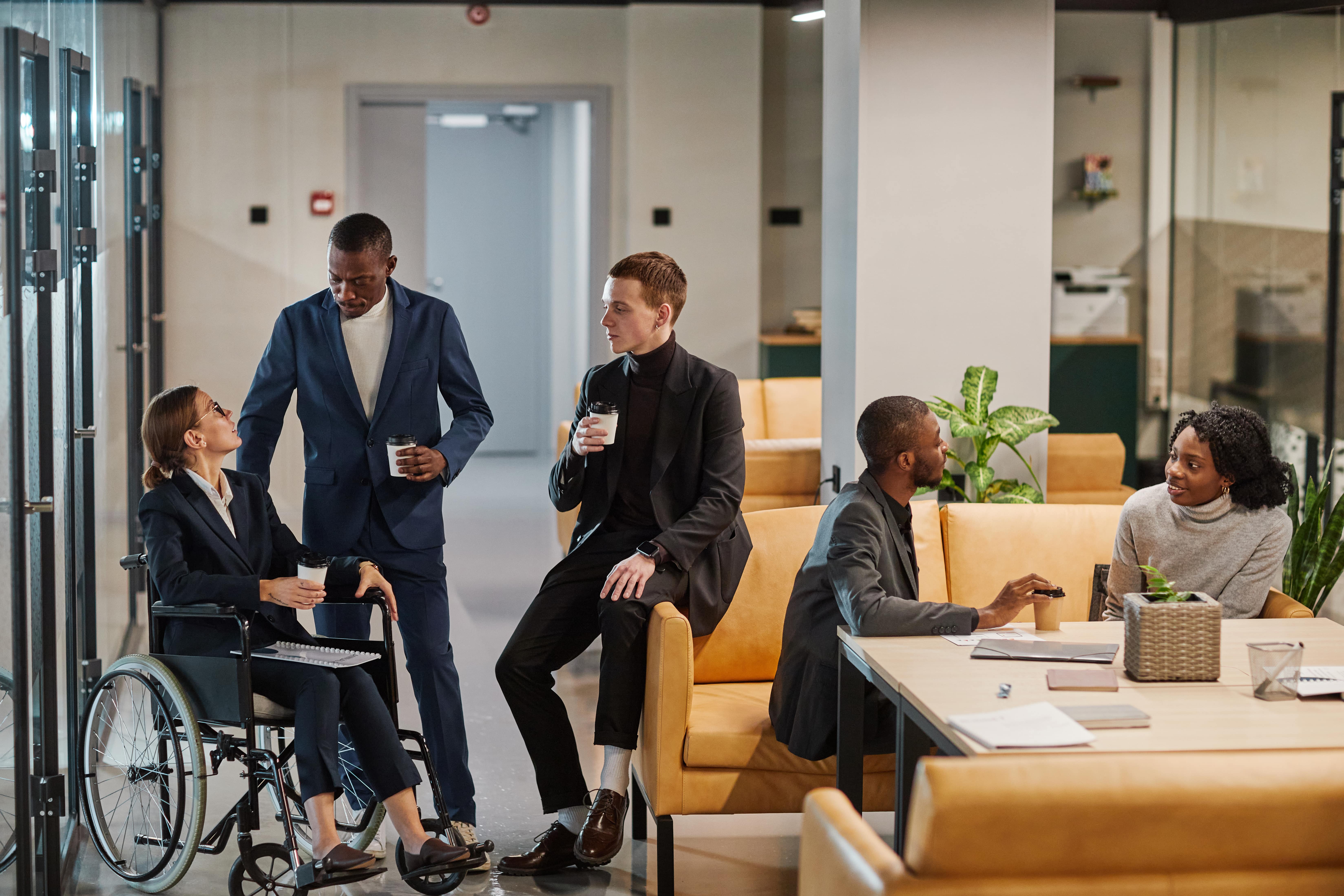

Most companies say they're inclusive. They point to the wheelchair ramp, the elevator, the equal opportunity policy in the handbook. But here’s the uncomfortable truth: compliance isn’t the same as inclusion, and most offices aren’t as ready as they think.
Disability inclusion isn’t just about access, it’s about belonging. It’s not just about wide doors, but open minds.
Let’s explore what it really takes to create a workplace that supports disabled employees, not just in theory, but in action.
Yes, ramps and elevators matter, but that’s the baseline. Ask:
Pro Tip: Invite feedback directly from disabled team members or partner with disability inclusion consultants to run an accessibility audit. Tools like AccessAble or Mobility Mojo can help you assess your spaces honestly.
Remote or hybrid? Then your digital space is your office. And yes, it needs to be inclusive.
Ask:
Tools like WAVE and Color Oracle can help identify visual and navigational barriers.
Not all disabilities are visible. Employees with chronic pain, autism, anxiety, PTSD, ADHD, or autoimmune disorders may need:
Instead of one-size-fits-all, consider a flexible workplace accommodation policy that evolves with employee needs.

Creating a truly inclusive space means tackling unconscious bias, microaggressions, and stereotypes.
Do your managers know the difference between "disabled person" and "person with a disability", and why it matters?
Is your team trained to lead with empathy, not assumptions?
Consider monthly inclusion workshops or lunch-and-learns led by people with lived experience. A good place to start is with organizations like The Valuable 500 or Scope UK.
Inclusion isn't a finish line, it’s a process. You won’t always get it right, but you should always be listening.
If your answer is "kind of," “not sure,” or “we’re working on it,” that’s okay. But, it’s also your cue to do better.
True inclusion is proactive, not reactive. It’s about designing workplaces that don’t just accommodate, they empower. Because when you build a space that supports disabled employees, you’re not just doing the right thing, you’re unlocking untapped innovation, loyalty, and perspective.

Most companies say they're inclusive. They point to the wheelchair ramp, the elevator, the equal opportunity policy in the handbook. But here’s the uncomfortable truth: compliance isn’t the same as inclusion, and most offices aren’t as ready as they think.
Disability inclusion isn’t just about access, it’s about belonging. It’s not just about wide doors, but open minds.
Let’s explore what it really takes to create a workplace that supports disabled employees, not just in theory, but in action.
Yes, ramps and elevators matter, but that’s the baseline. Ask:
Pro Tip: Invite feedback directly from disabled team members or partner with disability inclusion consultants to run an accessibility audit. Tools like AccessAble or Mobility Mojo can help you assess your spaces honestly.
Remote or hybrid? Then your digital space is your office. And yes, it needs to be inclusive.
Ask:
Tools like WAVE and Color Oracle can help identify visual and navigational barriers.
Not all disabilities are visible. Employees with chronic pain, autism, anxiety, PTSD, ADHD, or autoimmune disorders may need:
Instead of one-size-fits-all, consider a flexible workplace accommodation policy that evolves with employee needs.

Creating a truly inclusive space means tackling unconscious bias, microaggressions, and stereotypes.
Do your managers know the difference between "disabled person" and "person with a disability", and why it matters?
Is your team trained to lead with empathy, not assumptions?
Consider monthly inclusion workshops or lunch-and-learns led by people with lived experience. A good place to start is with organizations like The Valuable 500 or Scope UK.
Inclusion isn't a finish line, it’s a process. You won’t always get it right, but you should always be listening.
If your answer is "kind of," “not sure,” or “we’re working on it,” that’s okay. But, it’s also your cue to do better.
True inclusion is proactive, not reactive. It’s about designing workplaces that don’t just accommodate, they empower. Because when you build a space that supports disabled employees, you’re not just doing the right thing, you’re unlocking untapped innovation, loyalty, and perspective.